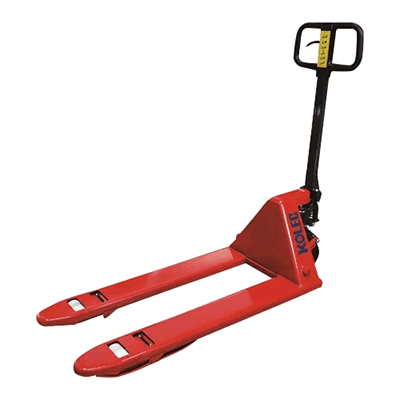What Is a Pallet Jack?

A pallet jack is a manual tool designed for moving loads on pallets, often referred to as a hand lift. It features a claw similar to a forklift at its tip, which hooks into a pallet. The load is lifted using hydraulic or electric power and moved using wheels attached to the jack. This mechanism allows for easier and more efficient transportation of loads compared to manual carrying.
Uses of Pallet Jacks
Pallet jacks are extensively used in factories and distribution warehouses for moving pallets. While not as suitable for heavy loads or wooden pallets as forklifts, their ease of maneuverability, lack of requirement for a driver’s license, and suitability for use by less experienced workers make them a popular choice in warehouse settings. Electric pallet jacks are also used in workplaces with many female workers, offering easier load transportation.
Principle of Pallet Jacks
Pallet jacks operate on the principle of leverage to lift loads. The claw of the jack hooks onto the pallet, using the load’s side as a fulcrum to lift with less force. The handle’s up-and-down movement is converted into hydraulic force to lift the load. Lowering the pallet is achieved by releasing hydraulic pressure through a lever or pedal. The wheels on the pallet jack reduce friction when moving the pallet horizontally, allowing for easy movement post-lifting. The rear wheels, equipped with rudders, facilitate directional changes, and the jack can be pushed or pulled to adjust its position precisely.